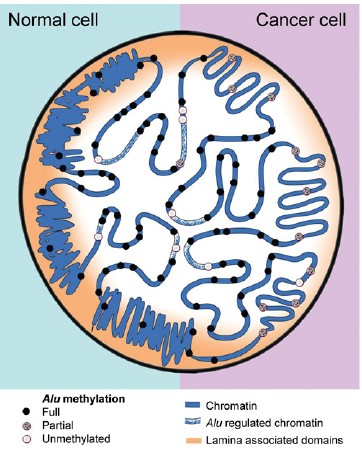IGTP Scientists at the IGTP discover new clues as to the role of "junk DNA"
New insights into DNA with no previously known function

Half the human genome is made up of repeated sequences that are often called "junk DNA", because up until now, little is known on what function they had. One of the reasons why we know very little about what junk DNA does is because there are technical reasons that make it very difficult to study and so it has simply been ignored in most genomic studies.
Mireia Jordà, of the IGTP, and her collaborators have developed a powerful technique designed to pinpoint the epigenetic state of Alu retrotransposons, which with more than a million copies per genome are the most abundant repeats in human DNA. Epigenetic changes are the attachment of chemical groups to the genome, which affect the activities of the underlying genes.
Using this new approach the team of scientists have identified specific elements which do have functional properties and have shown that Alu repeats affect the structure, and therefore the activity of the genome. Alu retrotransposons help to define the functional structure of the genome in normal cells, but when they are epigenetically deregulated in cancer cells they are associated with genetic instability and disturbed gene expression. This study opens the door to exploration of a whole new part of the human genome landscape and the mechanisms which control its function in health and disease.
Reference: Jordà M, Díez-Villanueva A, Mallona I, Martín B, Lois B, Barrera V, Esteller M, Vavouri T, Peinado MA. The epigenetic landscape of Alu repeats delineates the structural and functional genomic architecture of colon cancer cells.
Genome Research. 2017 Jan;27(1):118-132. doi: 10.1101/gr.207522.116. Epub 2016 Dec 20.

